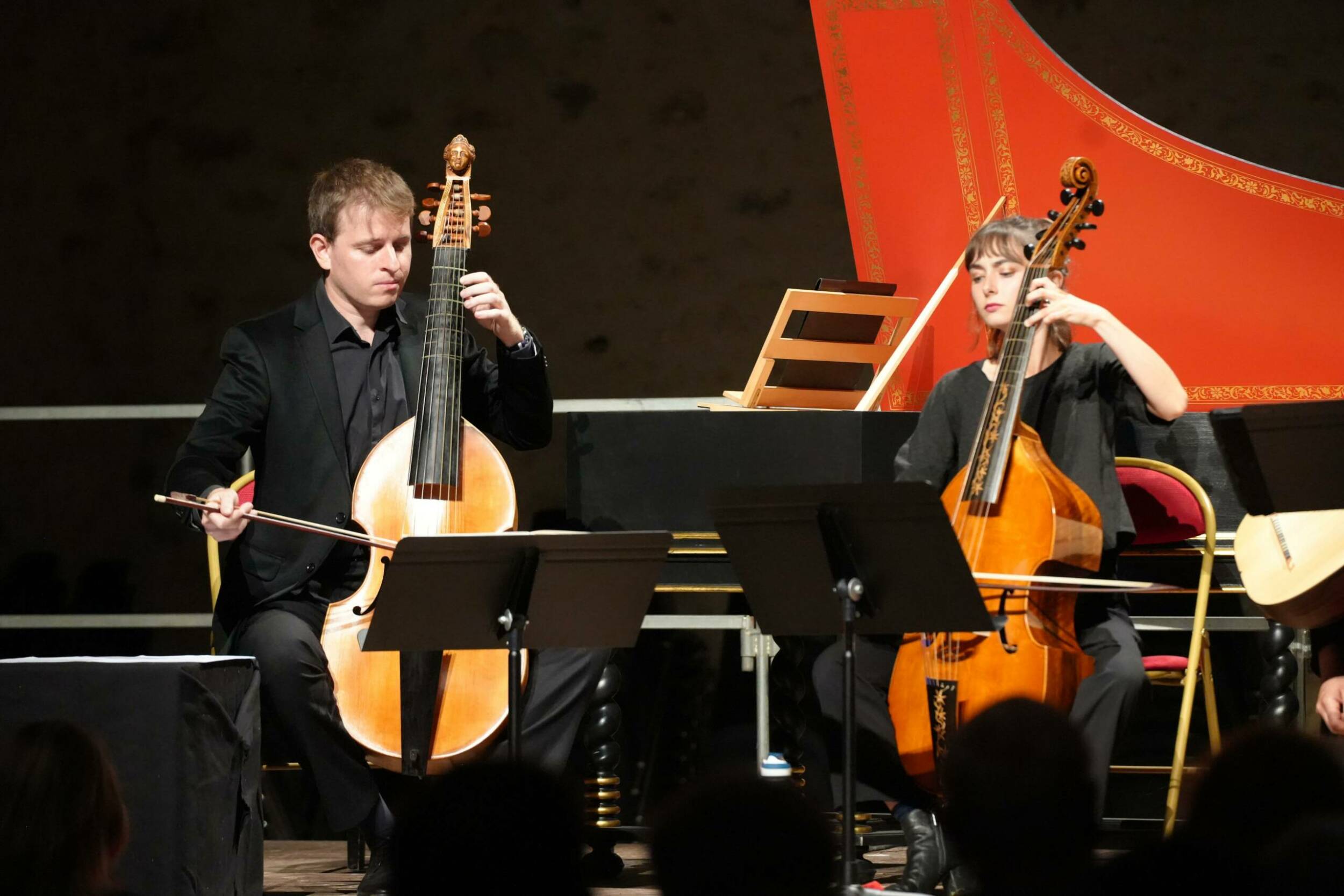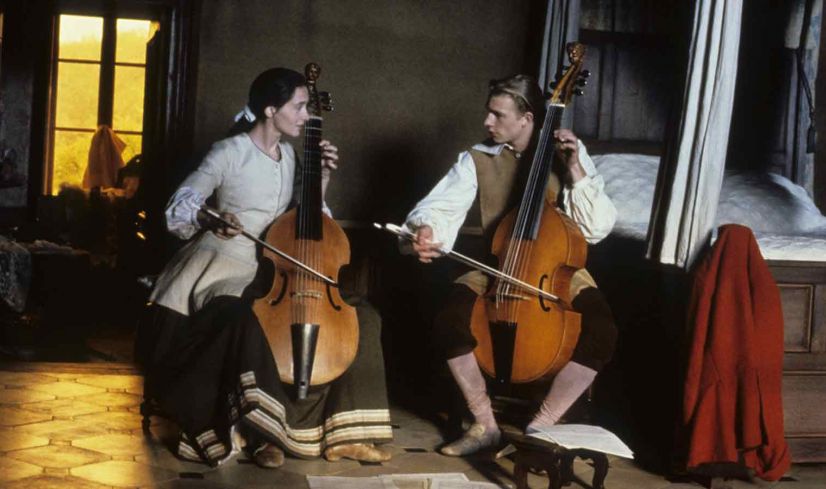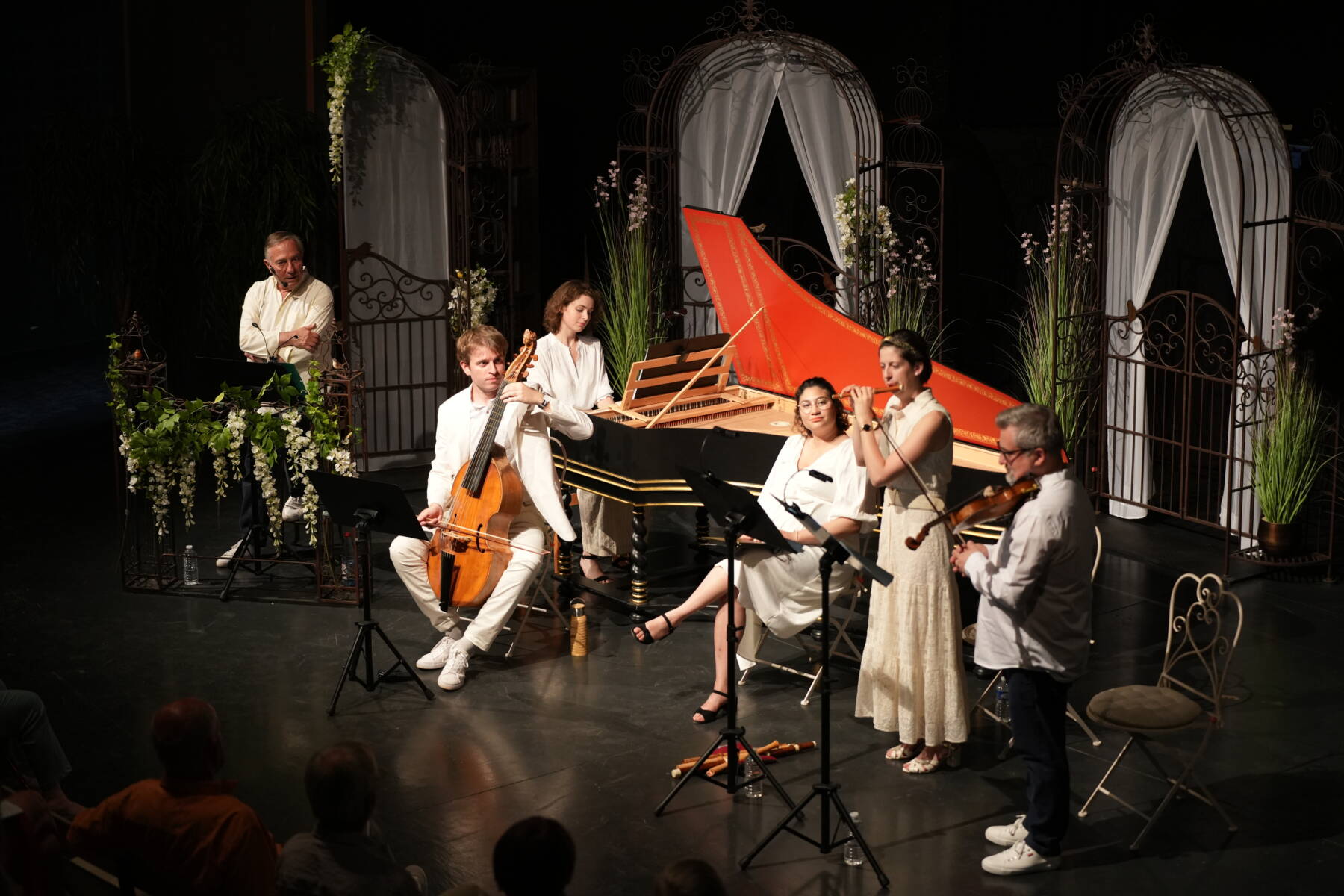Diego Ortiz, Tobias Hume, Thomas Ford, Sieur Demachy...
Folias & concerts for two viols
Chamber music

Presentation
On December 10, 1553, during one of the privileged moments of the flourishing Spanish Golden Age of music, Diego Ortiz’s Trattado de Glosas, also known as “el Toledano,” was printed in Rome. An essential reference for the study of 16th-century instrumental practice, this work is of exceptional interest, both historically and artistically, as it contains some of the finest examples of the repertoire known for viola da gamba (vihuela de arco or violone) and harpsichord during the Renaissance.
The English composer and violist Tobias Hume (c. 1569-1645) likely began composing relatively late in life. Although he was one of the finest violists of his time, Hume remains a truly colorful character—strong, unpredictable, and eccentric. Perhaps it was this character that kept him from being fully embraced by royal courts. Captain Tobias Hume was primarily a military officer who dedicated his life to a military career; he served as a mercenary for the King of Sweden and the Emperor of Russia, and he fought in Poland before returning to London in 1629, seeking employment from the King to combat the rebellion in Ireland. At around 60 years old, he found refuge at the Charterhouse in London, a monastery serving as a hospice for gentlemen, officers, and needy clergy; he died there, ruined, bitter, and nearly mad on April 16, 1645.
In the English court, Thomas Ford published his most significant musical collection in 1607 in London, Musicke of Sundrie Kindes. Meanwhile, the English violist William Young, attached to the court of Ferdinand-Charles of Austria in Innsbruck, published his sonatas in 1653. His pieces for solo viola appear in a London manuscript preserved at the Royal College of Music, which showcases a variety of works by multiple composers of that era.
Born in Abbeville and settled on Rue Neuve-des-Fossés in Paris, Sieur Demachy published in 1685 the first collection of viola pieces, which, like all instrumental collections of the time, consisted of dance suites half in tablature and half in score. Little is known about Monsieur de Sainte-Colombe, not even his first name; the mystery surrounding him is rivaled only by that of the Concerts à deux violes, the only works of his that have survived. Violists recognize him as the inventor of the seventh string added to the instrument in France. It has been deduced that he had two daughters because he performed concerts with them. Titon du Tillet even recounted the amusing story of Marin Marais secretly listening to his master, hidden beneath a shed in a mulberry tree, where the latter “played more quietly and more delightfully on the viola.”
La Folia, both “unbridled amusement” and “madness,” is a popular Spanish dance of Portuguese origin that developed towards the end of the Middle Ages in the Iberian Peninsula. By what mystery did these well-trodden themes, with their fresh and swirling simplicity, obsess so many composers across Europe for over two centuries, originating from Spain? The subversion contained in such diverse treatments, where even the most sophisticated variations and wildest ornamentation never break the initial hypnotic momentum. In these “standards” avant la lettre, the irrationality of each—the composers and performers—transports the listener. There is no doubt that Marin Marais sought to recapture, in his Folies d’Espagne, that auditory trance stemming from the obsessive rhythm of the ostinato.
Two of the most sought-after violists of the new Baroque generation invite us to immerse ourselves in the mysterious world of the viola da gamba, a Baroque instrument still little known to the general public, which is returning to the forefront thanks to young musicians increasingly eager to rediscover the authentic sound of the Baroque period.
Juliette Guichard and Valentin Tournet take us through the shadows and lights of duos for two equal violas: a fascinating universe of colors and lyricism, from exalted dances to inner laments, where music touches the heart through its poetry and perfection.
The program revolves around unique works whose sonorities remind us that “music is simply there to speak of what words cannot express,” as Sainte-Colombe said in Tous les matins du monde.
Cast
Valentin Tournet, viola da gamba
Juliette Guichard, viola da gamba

